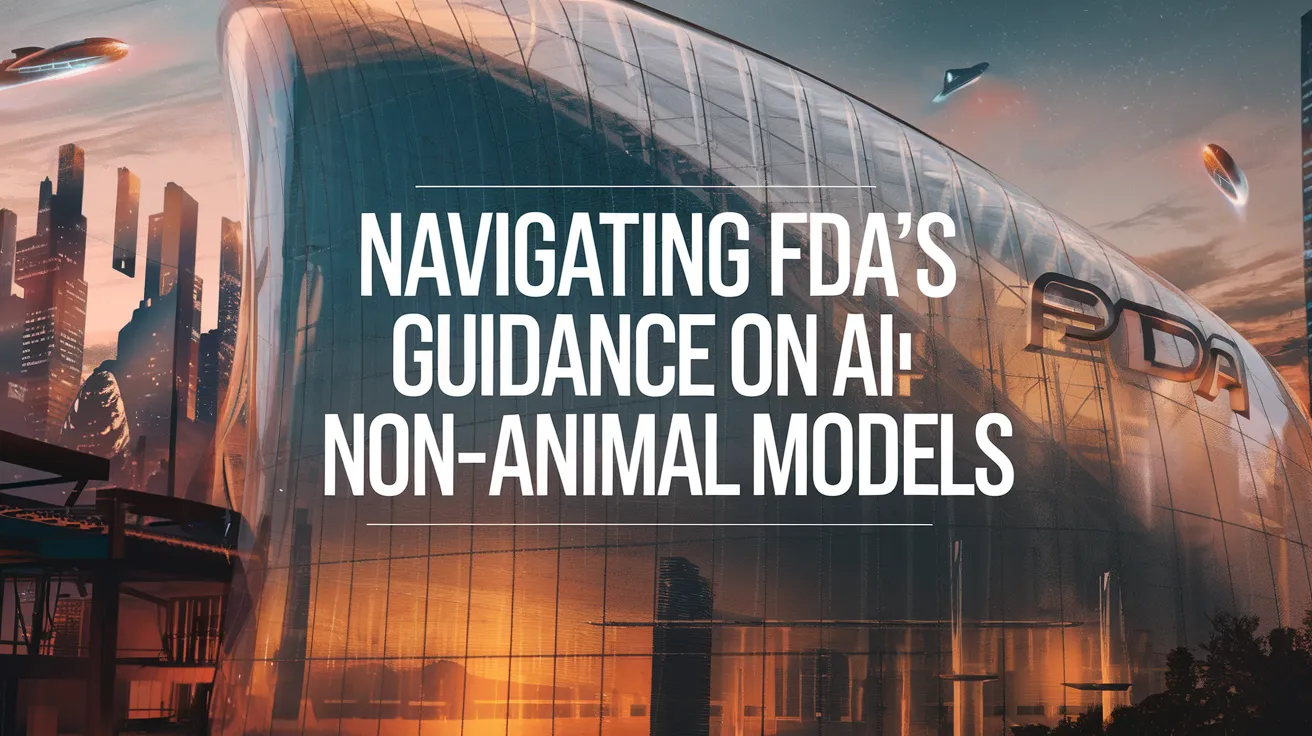Navigating FDA’s Guidance on AI and Non-Animal Models

In April 2025, the U.S. Food and Drug Administration (FDA) introduced a landmark guidance document titled Roadmap to Reducing Animal Testing in Preclinical Safety Studies. This initiative embodies the agency’s commitment to advancing New Approach Methodologies (NAMs) involving in silico models, organoids, and other non-animal alternatives. The guidance encourages sponsors of Investigational New Drug (IND) applications to adopt scientifically credible alternatives to traditional animal studies, marking a transformative shift towards more human-relevant, AI-integrated platforms that support regulatory submissions.
Additionally, in January 2025, the FDA released related draft guidance titled Considerations for the Use of Artificial Intelligence to Support Regulatory Decision-Making for Drug and Biological Products. This earlier document explored the application of AI throughout the drug development lifecycle and introduced a risk-based framework that evaluates AI model contexts, emphasizing the need for transparency in model architecture, data governance, lifecycle maintenance, and the model’s potential clinical impact, particularly when patient safety is concerned.
The FDA and NIH’s new alignment encourages scientists and biotechnology firms to embrace innovative computational, experimental, and other human-relevant methodologies as substitutes for animal research, underpinning the agency’s aspirations for evolving regulatory processes. This shift recognizes the growing demand for effective, ethical solutions in drug development.
Advancing AI Models and Protocols
Highlights of this evolving regulatory landscape include:
- Encouraging AI-Driven Innovations: The FDA aims to streamline the integration of AI into research, urging organizations to employ computational models and human organoids in safety testing.
- Support for Collaboration: The NIH plans to prioritize funding for grant proposals incorporating non-animal methodologies and will establish the Office of Research Innovation, Validation, and Application (ORIVA) to oversee initiatives for implementing NAMs.
- Long-Term Vision: The initiative’s success hinges on cooperation with stakeholders to create a robust framework for integrating AI into health solutions while ensuring patient safety remains paramount.
While the FDA has laid the groundwork for this transformative shift, stakeholders must implement comprehensive playbooks for intellectual property protection and data governance in conjunction with these innovative strategies.
The Future of AI and Non-Animal Models
This progressive shift in the regulatory approach toward AI and non-animal methodologies indicates a long-awaited evolution in the drug development field. The FDA’s roadmap calls for immediate actions, but it also casts a spotlight on the importance of accountability and ethical practices in the burgeoning AI landscape.
As organizations embrace these innovative methods and work to validate their effectiveness, the implications for public health and safety could be profound—ushering in a new era of responsible, human-centric healthcare initiatives.
This strategic pivot has been driven by previously enacted legislation while investors and researchers alike look toward a future where AI not only supplements but reshapes drug discovery and approval processes.